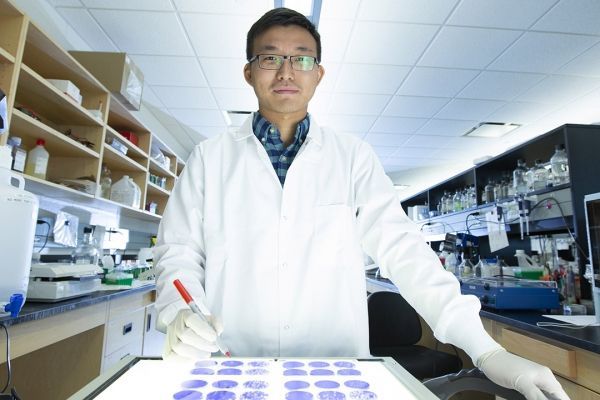University of Saskatchewan researchers have found a unique “sensor” mechanism inside cells that enables the immune system to recognize influenza, a finding that may lead to improved vaccines in the future.
“We have solved a long-standing puzzle as to how the body detects influenza A,” said PhD student GuanQun Liu, who is doing his research at the university’s Vaccine and Infectious Disease Organization — International Vaccine Centre (VIDO-InterVac).
In results published today in Nature Communications, Liu and his supervisor Yan Zhou identified for the first time that a protein sensor, a “patrolling” system for detecting influenza A, is the first line of defence against the virus in the nucleus of cells.
This year marks the centennial of the deadly 1918 influenza pandemic that killed more than 50 million people around the world. But influenza A, the most severe flu virus that can affect both humans and animals, continues to pose a health threat today as it did back then.
“Our goal is to find better ways to control flu infections around the world,” said Liu. “These viruses seem undefeatable in the history of medicine due to their high genetic variability that causes a resistance to antiviral agents.”
Continue reading at University of Saskatchewan.
Image via University of Saskatchewan.


